
Can I Convert My Existing Desk to a Standing Desk?
Table of Contents
- Can I Convert My Existing Desk to a Standing Desk?
- Understanding Your Options
- Methods for Converting Existing Desks
- 1. Using a Standing Desk Converter
- 2. Adding a Riser or Lift
- 3. Installing a Sit-Stand Workstation
- 4. Creating a DIY Standing Desk Solution
- 5. Utilizing a Desk with Built-in Standing Capabilities
- 6. Incorporating a Keyboard Tray and Monitor Arm
- 7. Using a Stack of Books or Boxes
- 8. Investing in a Sit-Stand Desk with a Built-In Motor
- 9. Upcycling an Old Desk or Furniture Piece
- 10. Purchasing a Standing Desk Extension
- Benefits of Converting to a Standing Desk
- Conclusion
Sitting for prolonged hours has been linked to several health issues, including poor posture, back pain, and an increased risk of chronic diseases. With the growing popularity of standing desks, many people are asking: Can I convert my existing desk to a standing desk? The good news is that you don’t need to buy a brand-new desk to enjoy the benefits of standing while working.
Whether you’re a DIY enthusiast or prefer a simple ready-made solution, converting your current desk is easier than you might think. In this comprehensive guide, we'll explore various methods and options to help you transform your workspace.
Can I Convert My Existing Desk to a Standing Desk?
Yes, you can convert an existing desk to a standing desk using several different methods. The approach you choose depends on your budget, available tools, and desired setup. From using a standing desk converter to crafting a DIY solution, there are multiple ways to elevate your desk. Let’s dive into some of the most effective methods and options available.

Understanding Your Options
Before making any modifications, it’s important to understand the different options for converting your desk into a standing desk. These range from simple risers and converters to full sit-stand workstations. Each option has its own set of pros and cons, depending on your workspace needs and preferences.
Types of Standing Desk Converters and Risers
A standing desk converter is a device that sits on top of your existing desk, allowing you to raise your monitors, keyboard, and other essentials to standing height. Converters come in various designs, some with adjustable heights and additional features like keyboard trays. These are ideal for people who want to quickly switch between sitting and standing positions.
Alternatively, desk risers are simpler, often fixed-height platforms that elevate your desk setup. While they don’t offer the flexibility of converters, risers are more affordable and still provide a quick way to lift your workspace.

Sit-Stand Workstations and Desks with Built-in Standing Capabilities
Another option is a sit-stand workstation, which offers a more robust and flexible solution. These workstations are designed to easily transition between sitting and standing positions, often with built-in mechanisms like gas springs or electric motors.
You can also look for desks with built-in standing capabilities, which are adjustable and include mechanisms that allow the desk to raise and lower. These may require more investment but offer a more integrated solution.
DIY Solutions and Upcycling Options
If you prefer a hands-on approach, there are many DIY solutions to convert your desk. From stacking boxes and books to creating custom risers, DIY projects can be both fun and budget-friendly. Upcycling an old piece of furniture into a standing desk is another sustainable and creative approach. Check out these DIY L-shaped desk plans for inspiration.
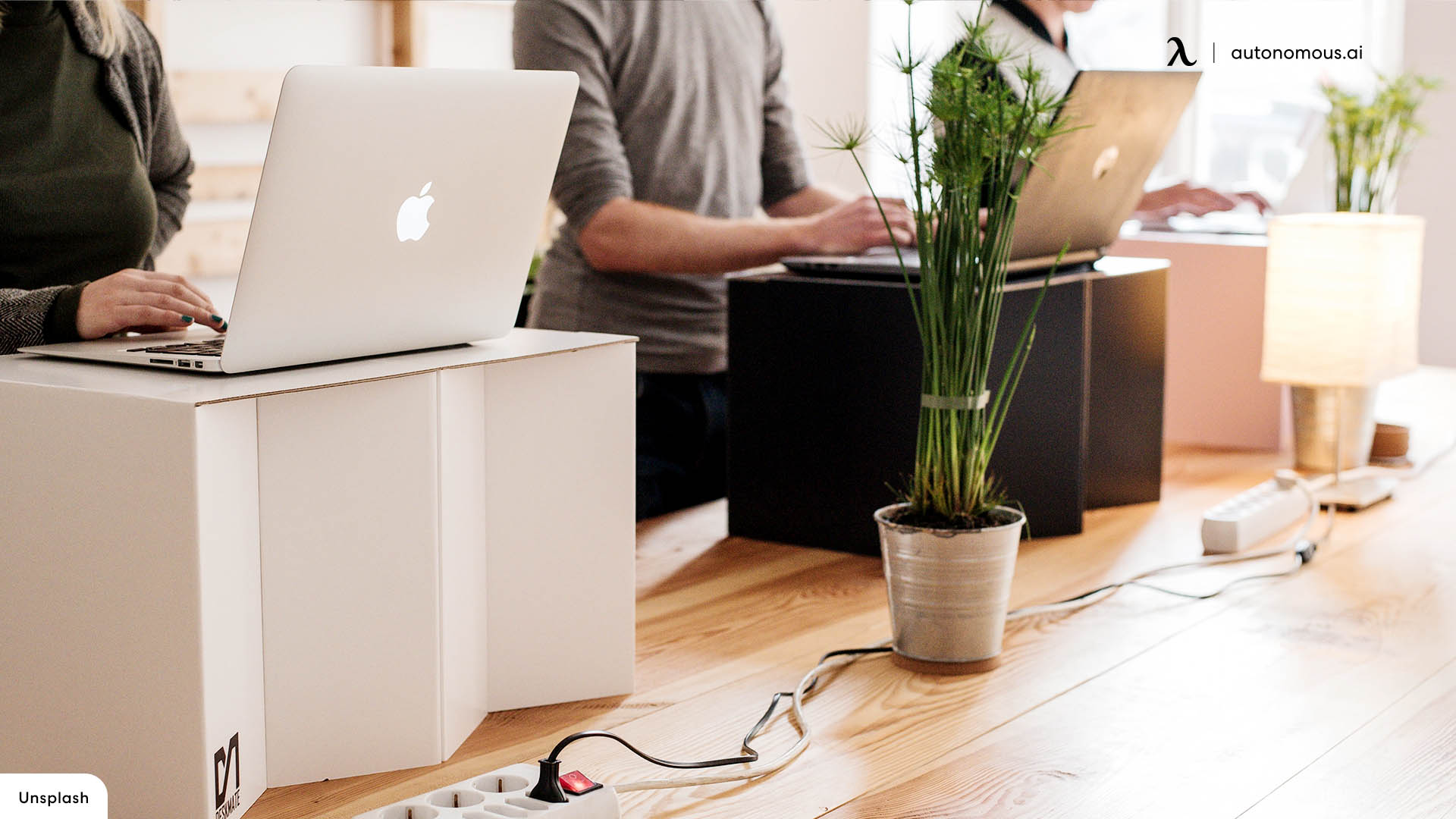
Methods for Converting Existing Desks
Now that we’ve covered the different types of converters and options, let’s dive into the practical ways to convert your existing desk into a standing desk.
1. Using a Standing Desk Converter
One of the easiest methods to convert your existing desk is by using a standing desk converter. These devices sit on your desk and provide a platform for your monitor, keyboard, and accessories. Many converters are adjustable, so you can change the height based on your preference. Some even include separate levels for monitors and keyboards, improving ergonomics.
If you're unsure about how much height you need, consider reading this guide on the ideal height for standing desks.
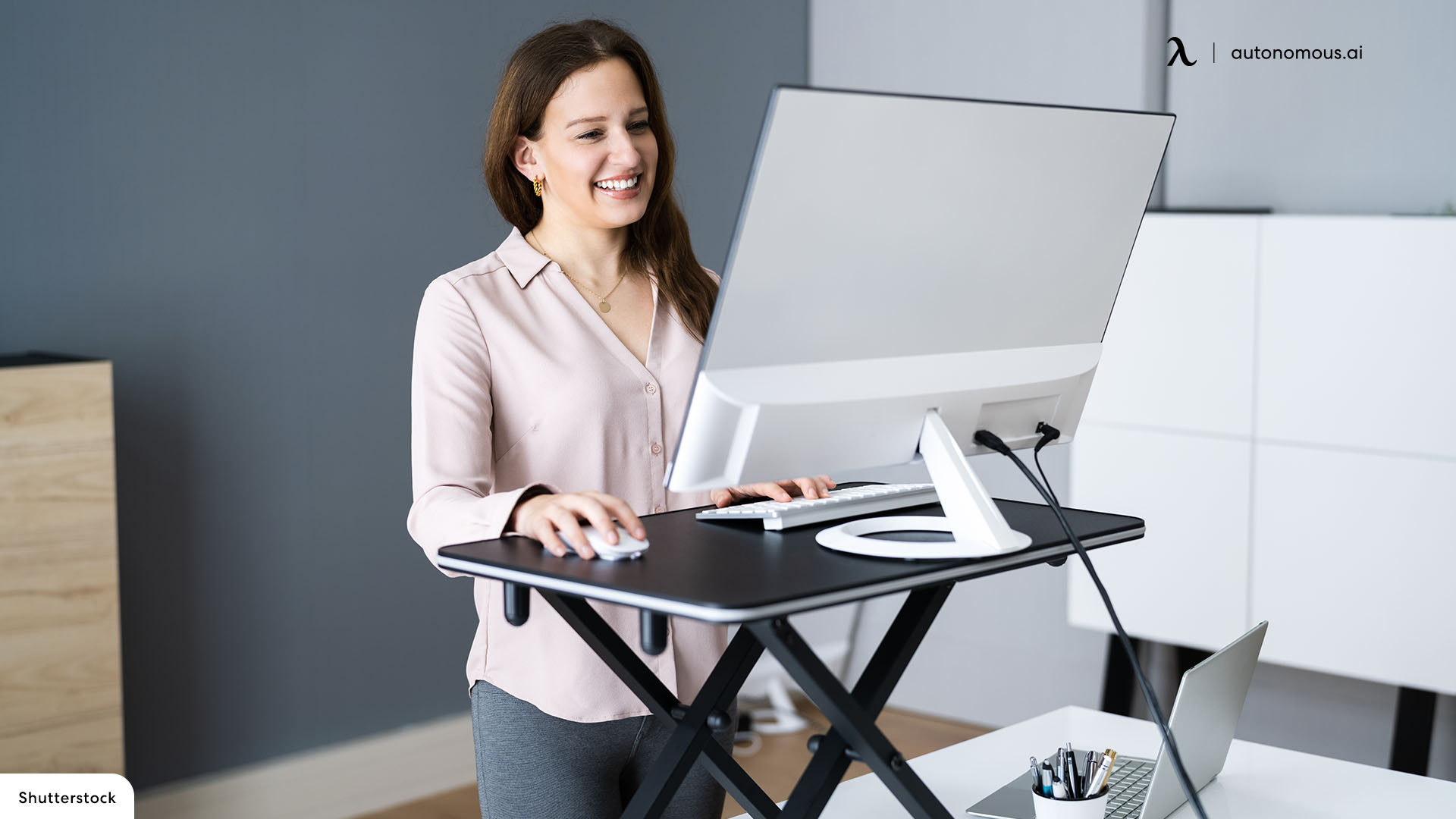
2. Adding a Riser or Lift
If you're looking for a more budget-friendly solution, a desk riser or lift can be a simple way to elevate your workspace. Risers typically come in different sizes and can be placed underneath your monitor and keyboard to raise them to the proper height. For a more advanced setup, consider adjustable risers that allow for slight height modifications based on your comfort.
3. Installing a Sit-Stand Workstation
A sit-stand workstation is a more permanent solution that allows for easy transitions between sitting and standing. These are typically mounted to the desk or wall and use mechanical arms to move your entire workstation up and down. This method provides excellent flexibility for those who need to alternate between sitting and standing multiple times throughout the day.

4. Creating a DIY Standing Desk Solution
For the crafty and budget-conscious, a DIY standing desk solution may be the perfect project. You can use materials you already have at home, like stacks of books or crates, to elevate your monitor and keyboard. If you want a more polished look, you can build a custom riser out of wood or metal. For a unique workspace, consider creating a DIY gaming desk with standing capabilities, using these gaming desk ideas for inspiration.
5. Utilizing a Desk with Built-in Standing Capabilities
If you're ready for a more significant upgrade, you might consider investing in a desk with built-in standing capabilities. These desks come equipped with adjustable mechanisms, allowing you to easily change the desk height. Some models include manual cranks, while others are motorized, providing seamless transitions between heights.
If you're not sure how to adjust your desk's settings, check out the guide on how to unlock a standing desk.

6. Incorporating a Keyboard Tray and Monitor Arm
A more ergonomic solution to converting your desk is by adding a keyboard tray and monitor arm. This method allows you to lift your monitor and keyboard independently, ensuring that both are at the ideal height for standing. A monitor arm, in particular, can provide more flexibility by allowing you to tilt and adjust the position of your screen.
7. Using a Stack of Books or Boxes
If you're looking for a quick, temporary solution, stacking books or boxes under your monitor and keyboard can easily convert your existing desk into a standing desk. While not the most elegant solution, it’s a great way to experiment with standing before investing in a more permanent setup.
8. Investing in a Sit-Stand Desk with a Built-In Motor
A sit-stand desk with a built-in motor is one of the most advanced options for converting your desk into a standing desk. These desks use electric motors to adjust the height at the press of a button, allowing for smooth and precise adjustments. This is a good option if you're willing to invest in a long-term solution that enhances both comfort and productivity.
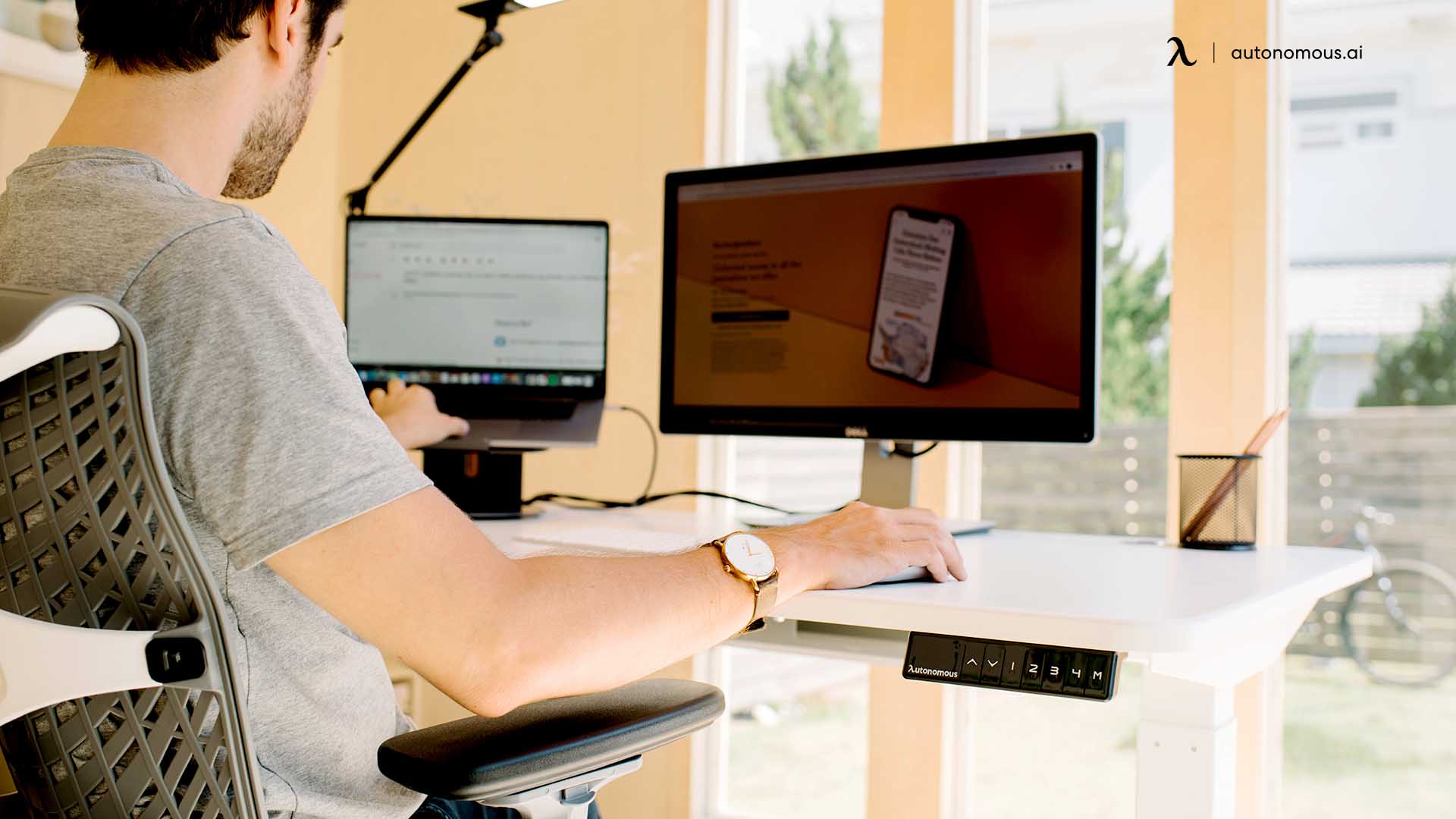
9. Upcycling an Old Desk or Furniture Piece
A creative and eco-friendly solution is upcycling an old desk or another piece of furniture into a standing desk. You can modify an old desk by adding adjustable legs, installing a riser, or even converting a bookshelf into a standing workstation. Upcycling is a great way to breathe new life into unused furniture while giving you a unique, custom setup.
10. Purchasing a Standing Desk Extension
A standing desk extension is an accessory that can be added to your current desk to lift your workspace to standing height. These extensions are usually larger than risers and provide additional space for monitors, laptops, and other devices. Many standing desk extensions are height-adjustable, making it easy to find the perfect height for your needs.
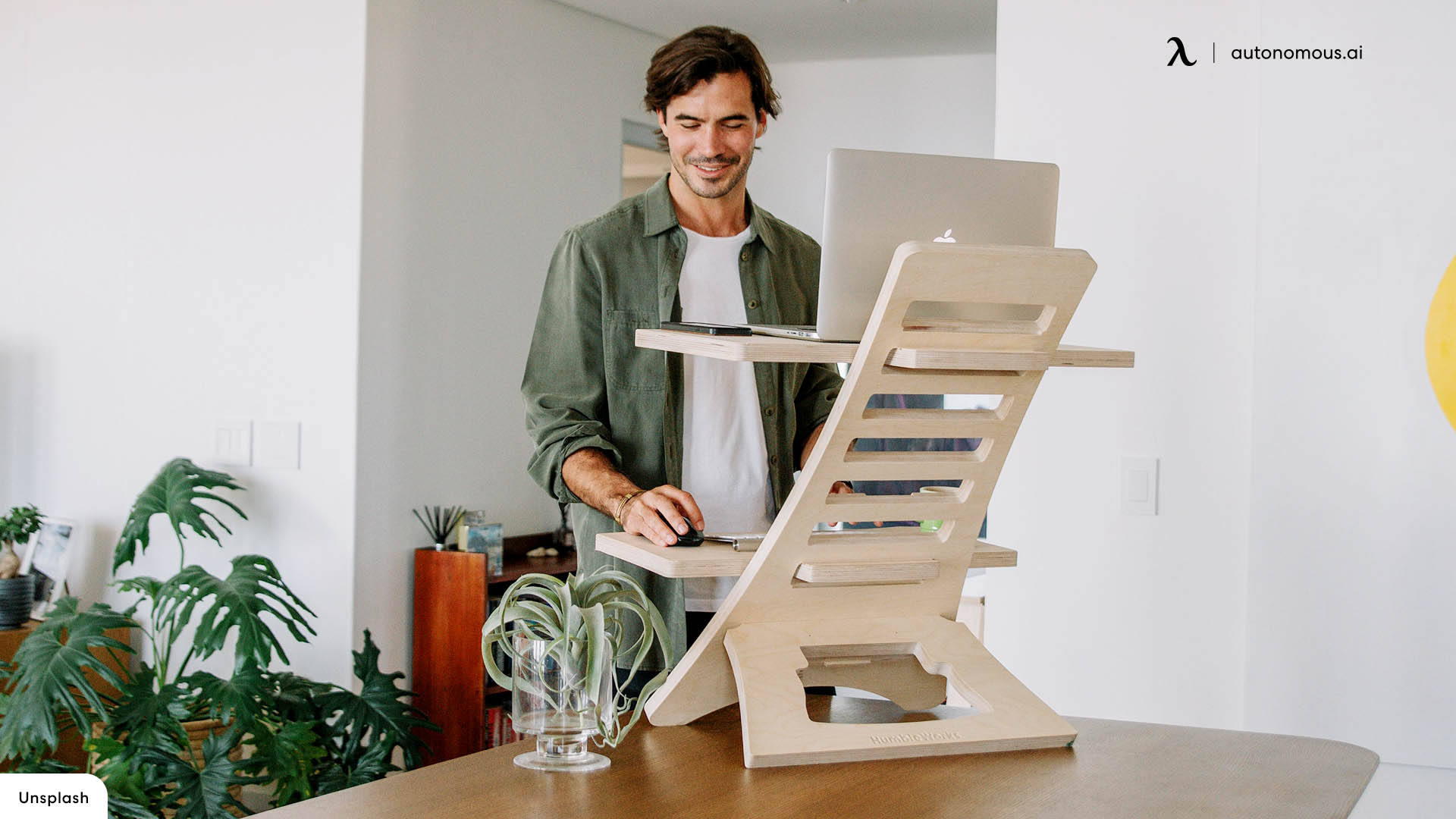
Benefits of Converting to a Standing Desk
Converting your current desk into a standing desk has several health and productivity benefits. Here are some of the key advantages:
1. Reduced Risk of Chronic Diseases
Standing desks have been shown to reduce the risk of chronic diseases like heart disease, diabetes, and obesity. By incorporating more movement into your day, you can improve circulation and lower your risk of developing these conditions.
2. Improved Posture and Reduced Back Pain
One of the biggest benefits of a standing desk is the improvement in posture and the reduction of back pain. Standing allows for better spinal alignment, which can alleviate the strain that comes with prolonged sitting. Many users report less discomfort in their back, neck, and shoulders after switching to a standing desk.
3. Increased Energy and Productivity
Standing while working can boost energy levels, focus, and productivity. By reducing the physical strain caused by sitting, you're more likely to stay engaged and energized throughout the day. A standing desk encourages frequent movement, which can combat the fatigue often associated with sitting for long hours.
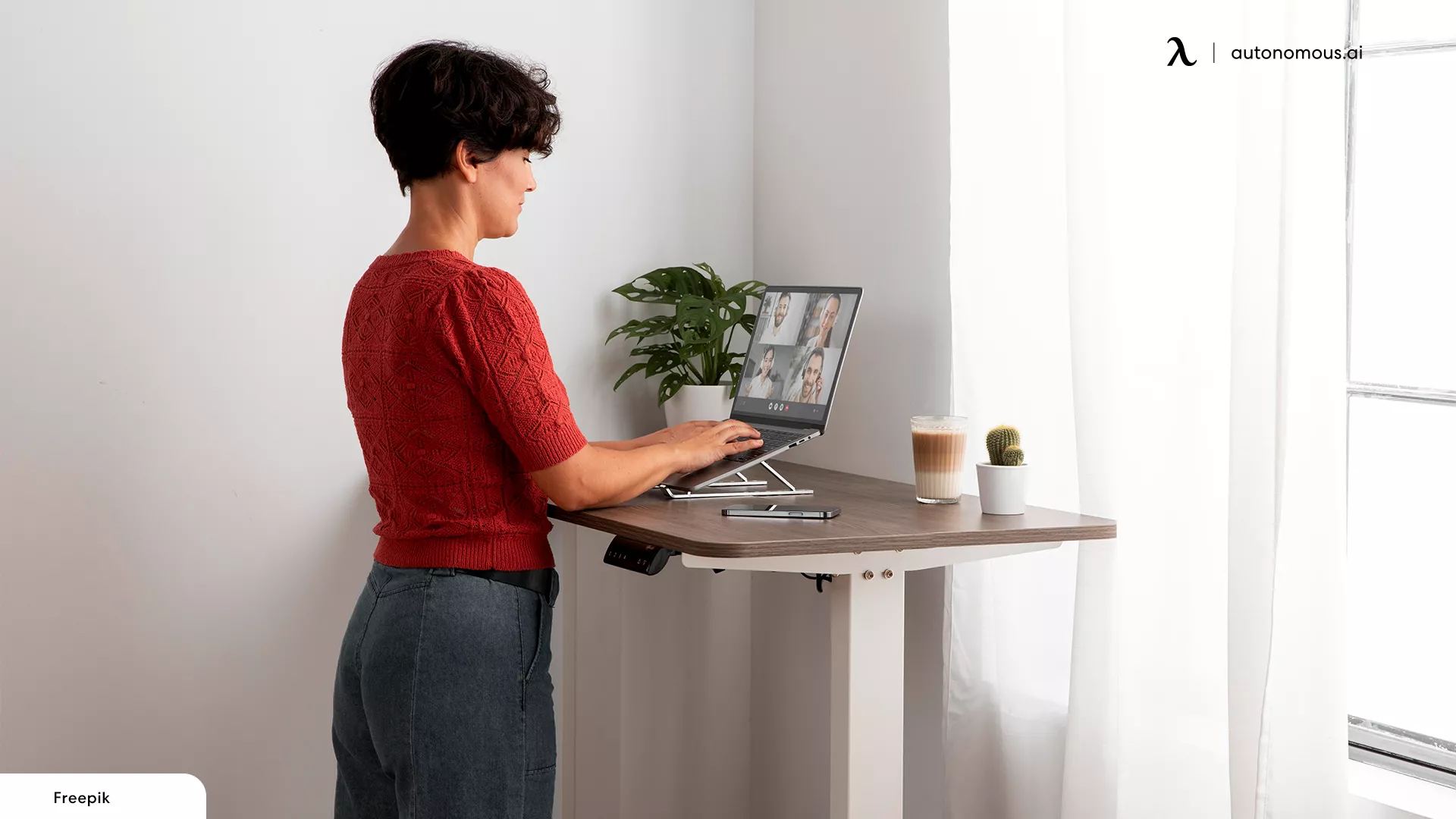
Conclusion
Converting your existing desk to a standing desk is not only possible but offers a wide variety of solutions for every budget and workspace. Whether you choose a simple desk riser, a full sit-stand workstation, or a DIY approach, the key is finding the solution that works best for you. Enjoy the numerous health and productivity benefits that come with standing while working, and explore the different methods to make your desk setup ideal for your lifestyle.
Stay connected with us!
Subscribe to our weekly updates to stay in the loop about our latest innovations and community news!
Interested in a Link Placement?
Spread the word
.svg)


.webp)





.webp)

